Maine is home to a diverse array of native plants, many of which are unique to the state and play an important role in its natural ecosystem. These plants provide food and shelter for wildlife, help to regulate the environment, and add beauty and interest to the landscape. From the blueberry, a beloved and iconic fruit, to the lady’s slipper orchid, a rare and protected wildflower, Maine’s native plants are a valuable and beautiful part of its natural heritage.
Today, we will explore some of the most notable native plants of Maine and their significance to the state (and tell you if they are edible)!
1. Blueberry (Edible)
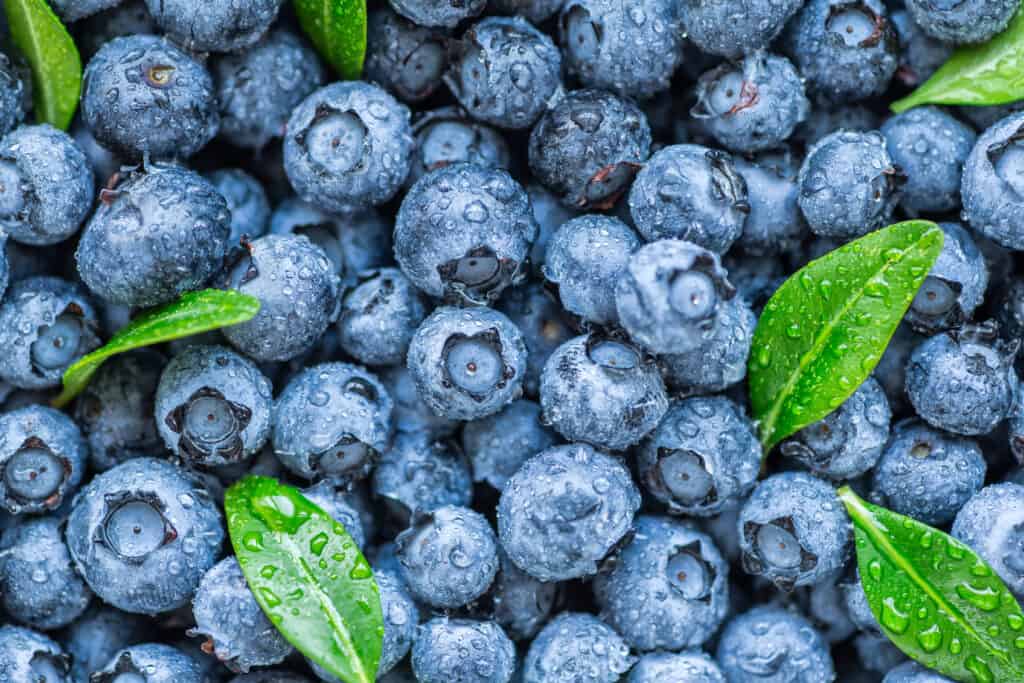
The fruits of the blueberry plant are high in vitamins and nutrients, and they are often used in desserts and baked goods.
©Bukhta Yurii/Shutterstock.com
If there were one plant that could represent Maine, it would have to be the blueberry. This small plant is native to the state and is well-known for its delicious fruits. Visually, it’s a small shrub that grows to be about two to six feet tall, with small, white or pink flowers and dark green leaves. The blueberry is commonly found in wooded areas and is a popular choice for home gardens, but can be found spread throughout most of the state.
As far as usage goes, the blueberry is a powerhouse. The fruits of the blueberry plant are high in vitamins and nutrients, and they are often used in desserts and baked goods, such as pies, muffins, and jams (who doesn’t love a good blueberry muffin?). On top of being used in foods, they can also be eaten right off the shrub, an activity that black bears and humans alike love to participate in.
In addition to their culinary uses, blueberries are also valued for their medicinal properties. They have been known to have anti-inflammatory and antioxidant effects, plus they have a wealth of micronutrients that are essential to a well-rounded diet.
As a symbol and icon, few plants represent a state the way the blueberry represents Maine. They are an important part of Maine’s history and culture and are celebrated each year at the Wild Blueberry Festival in Machias. This annual event features blueberry-themed activities, such as picking, cooking, and, of course, eating!
2. Black Cherry (Edible)

The fruits of the black cherry tree are edible and have a sweet, slightly tart flavor.
©alisafarov/Shutterstock.com
Although not as well-known as the blueberry, the black cherry holds its own as an important plant for the state of Maine. It’s easily recognizable by its deep red, nearly black fruits and can be found on tall trees that can grow up to 80 feet in height. The trees have dark green leaves and small, white flowers, but the small fruits are the best way to identify them. The black cherry is commonly found in forests and along the edges of wooded areas.
The fruits of the black cherry tree are edible and have a sweet, slightly tart flavor. They are often used in desserts, such as pies and ice cream, as well as in jams and jellies. The fruit can also be eaten fresh, either on its own or in fruit salads.
In addition to its culinary uses, the black cherry tree has also been used for medicinal purposes. The bark of the tree contains compounds that have been used to treat various ailments, such as coughs and fevers. The wood of the black cherry tree is also valued for its beauty and durability and is often used for furniture and other wood products.
3. Lady’s Slipper Orchid (Not Edible)
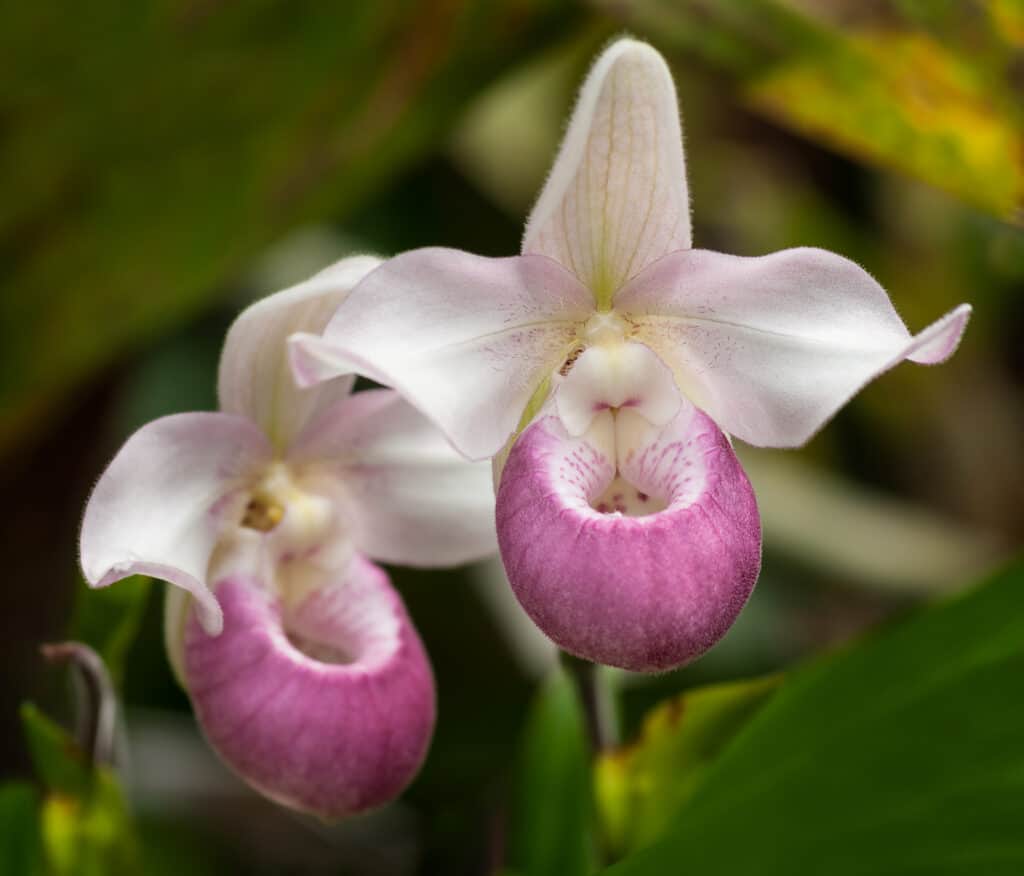
The lady’s slipper orchid is a hardy plant that can thrive in a variety of conditions.
©iStock.com/hkuchera
The lady’s slipper orchid is a beautiful and unique native plant of Maine. It is a member of the orchid family and is known for its showy, slipper-shaped flowers. The lady’s slipper orchid is a small plant that grows to be about one to two feet tall, with long, narrow leaves and delicate pink or white flowers.
The lady’s slipper orchid is a rare and protected species in Maine and is found in moist, wooded areas. It is important to respect and protect this delicate plant, as it is vulnerable to habitat destruction and over-collecting. Despite its delicate appearance, the lady’s slipper orchid is a hardy plant that can thrive in a variety of conditions. It is a slow-growing plant that can take several years to reach maturity and produce flowers. However, once it reaches maturity, it can produce beautiful blooms that last for several weeks.
The lady’s slipper orchid is a beloved and iconic plant of Maine and is celebrated each year at the Lady’s Slipper Festival in Fryeburg. This annual event features activities, such as guided hikes and workshops, focused on the conservation and enjoyment of this special plant.
4. Wild Lupine (Not Edible)
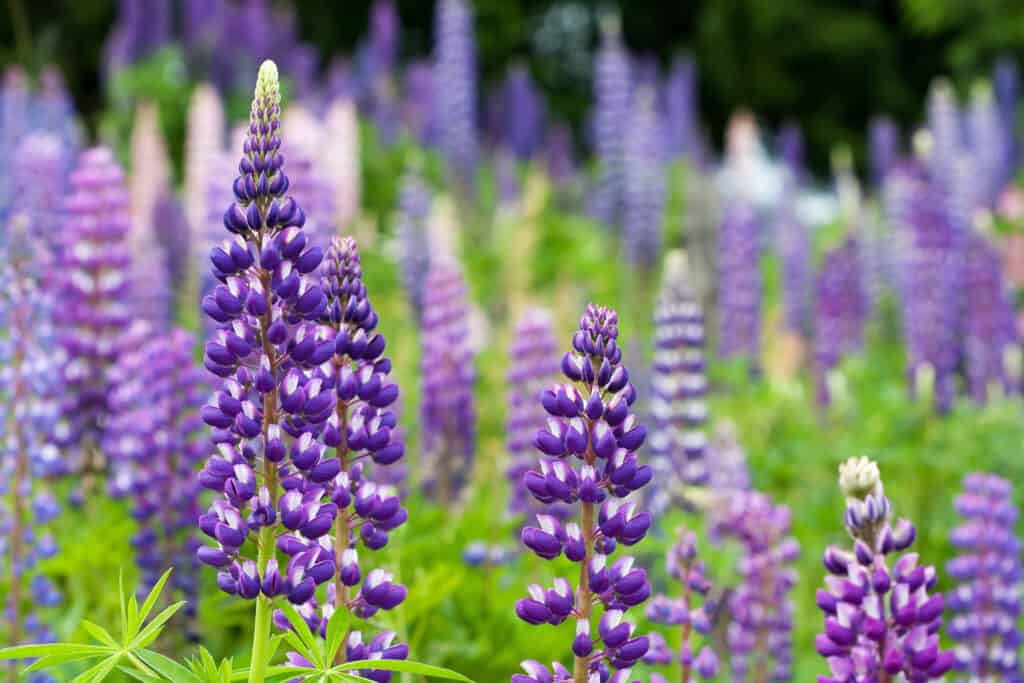
The wild lupine is primarily valued for its beauty and aesthetic appeal.
©iStock.com/yuelan
The wild lupine is a native plant of Maine and is known for its beautiful, showy flowers. It is a tall, herbaceous plant that grows to be about two to four feet tall, with long, narrow leaves and clusters of purple, blue, or white flowers. The wild lupine is commonly found in open, sunny areas, such as meadows and fields, and is often used as a decorative plant in gardens.
The wild lupine is primarily valued for its beauty and aesthetic appeal. Its colorful flowers are truly beautiful when seen against a contrasting backdrop. Although most people don’t know the name of the wild lupine, they are recognized by most people as a meadow plant that is often seen when driving past fields or walking along nature trails.
Although they are pretty, you don’t want to eat wild lupine since they are just flowers and are actually toxic to humans and animals.
5. Sweet Fern (Probably Shouldn’t Eat It)
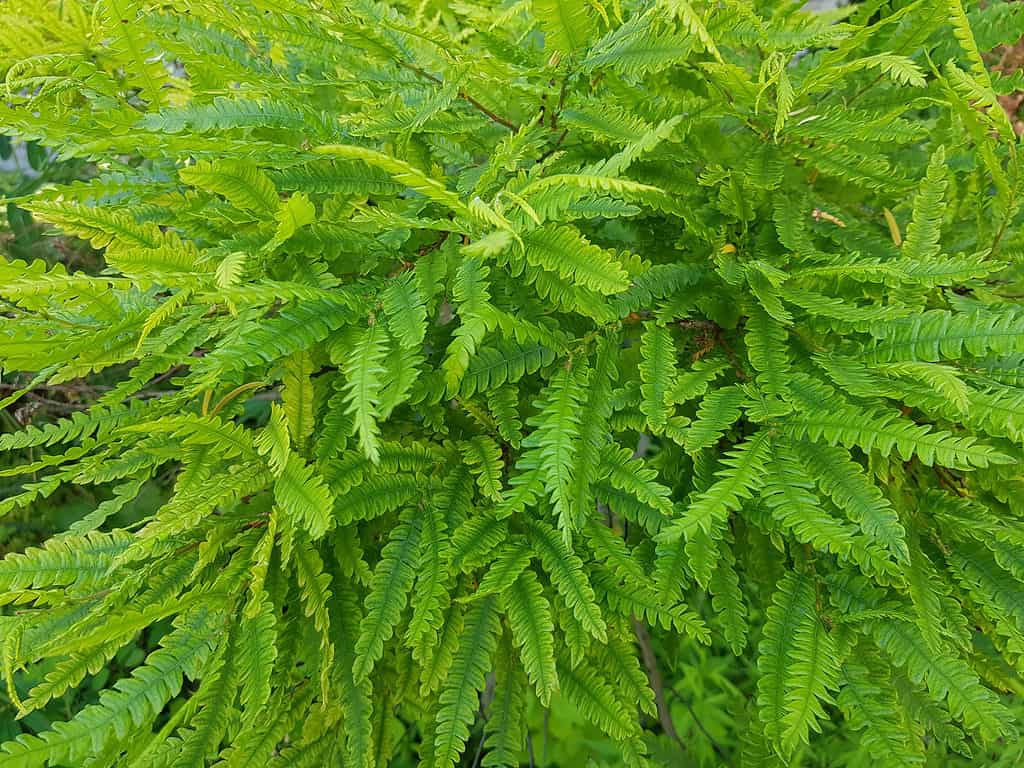
The leaves of the sweet fern plant have a sweet, spicy aroma, which gives the plant its common name.
©guentermanaus/Shutterstock.com
The sweet fern is another native plant of Maine and is known for its fragrant, fern-like leaves (although it isn’t itself actually a fern). It is a low-growing shrub that grows to be about two to three feet tall, with small, inconspicuous flowers and dark green leaves. The sweet fern is commonly found in wooded areas and along the edges of forests.
The leaves of the sweet fern plant have a sweet, spicy aroma, which gives the plant its common name. They are often used as a natural insect repellent, as their scent can repel mosquitoes and other pests, and the leaves can also be crushed and used as a natural air freshener or deodorizer. If you are out hiking during mosquito season, squashing some and keeping it with you may be a decent idea!
Sweet fern, despite its name, isn’t normally eaten for non-medicinal purposes, although Native Americans used it to treat various ailments.
6. Wild Columbine (Not Edible)
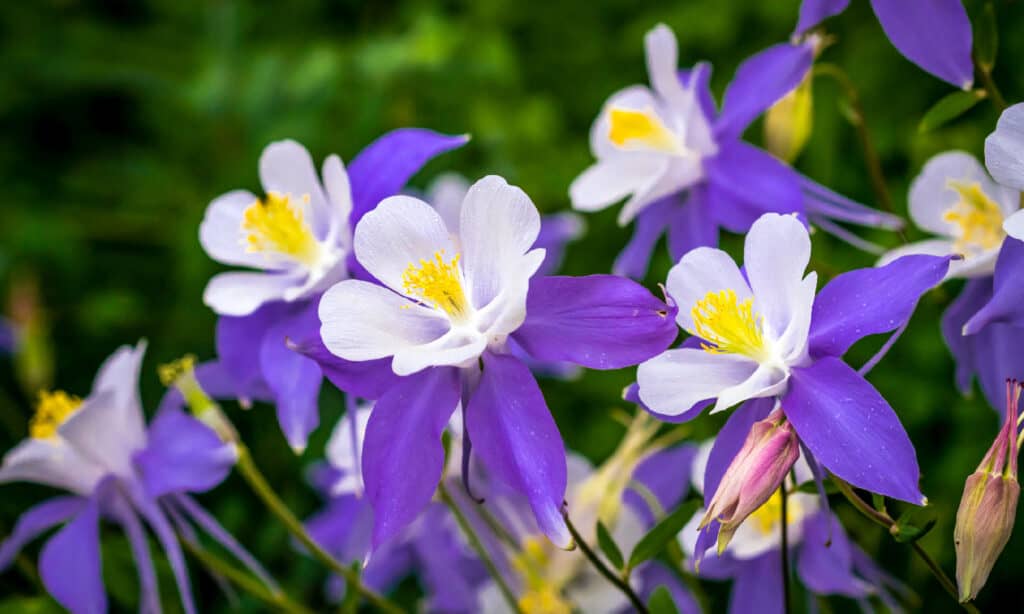
The wild columbine is commonly found in moist wooded areas and along the edges of forests.
©iStock.com/tvirbickis
The wild columbine is a native plant of Maine and is known for its delicate, bell-shaped flowers. It is a herbaceous plant that grows to be about one to two feet tall, with compound leaves and colorful, “nodding” flowers. A nodding flower is simply one that is facing down like a human nodding its head! The wild columbine is commonly found in moist wooded areas and along the edges of forests.
The flowers of the wild columbine are particularly striking, with a variety of beautiful colors that can include shades of red, pink, purple, and yellow. The flowers are also bilaterally symmetrical, with two upper petals and three lower petals that form the shape of a nodding bell. These characteristics make the wild columbine a prime choice for gardeners who want to add something unique to their outdoor spaces.
Again, as flowers, you probably shouldn’t eat them.
7. Mountain Laurel (Not Edible)
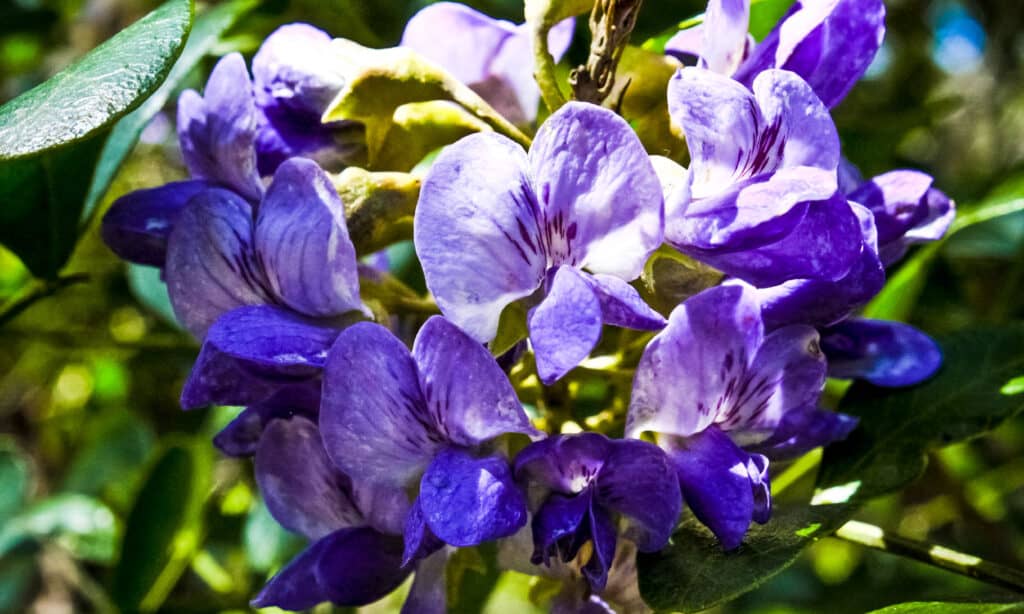
The flowers of the mountain laurel have a delicate, cup-shaped appearance.
©Dark Obsession Photography/Shutterstock.com
The mountain laurel is a native plant of Maine and is known for its beautiful, showy flowers. It is a small tree or large shrub that grows to be about 10-15 feet tall, with dark green leaves and clusters of pink, white, or red flowers. The mountain laurel is commonly found in wooded areas and along the edges of forests.
The flowers of the mountain laurel are wonderful to see, with a delicate, cup-shaped appearance and a range of colors that can include shades of pink, white, and red. The flowers are also fragrant, with a sweet, floral scent that you can pick up even while briefly walking by.
Conclusion
Maine is home to a diverse array of native plants that play an important role in the state’s natural ecosystem. These plants provide food and shelter for wildlife, help to regulate the environment, and add beauty and interest to the landscape. As we continue to appreciate and enjoy the beauty and benefits of these plants, it is important to also protect and conserve them for future generations.
Up Next:
- 12 Incredible Trees Native to Maine
- 9 Native Plants in Colorado
- Best Swimming Holes In Maine
- The 5 Best Spots for Leaf Peeping in Maine: Peak Dates, Top Driving Routes, and More
- Discover The 9 Largest Animals In Maine, and Where You’ll Find Them
The photo featured at the top of this post is © vaivirga/Shutterstock.com
Thank you for reading! Have some feedback for us? Contact the AZ Animals editorial team.






